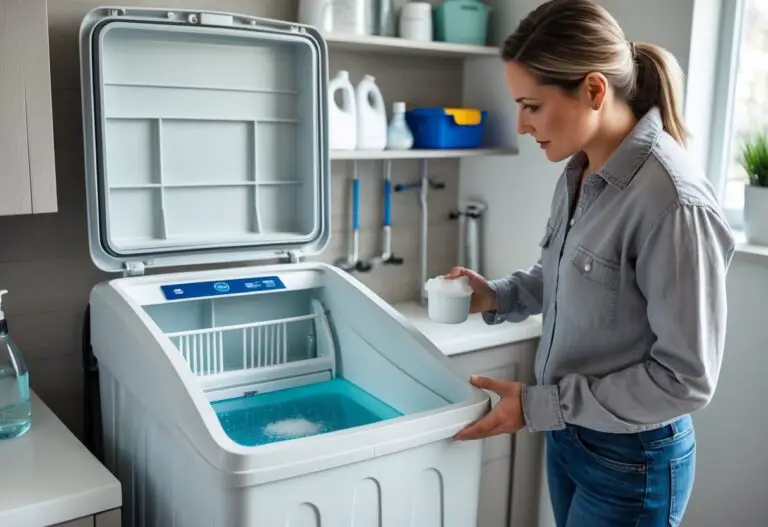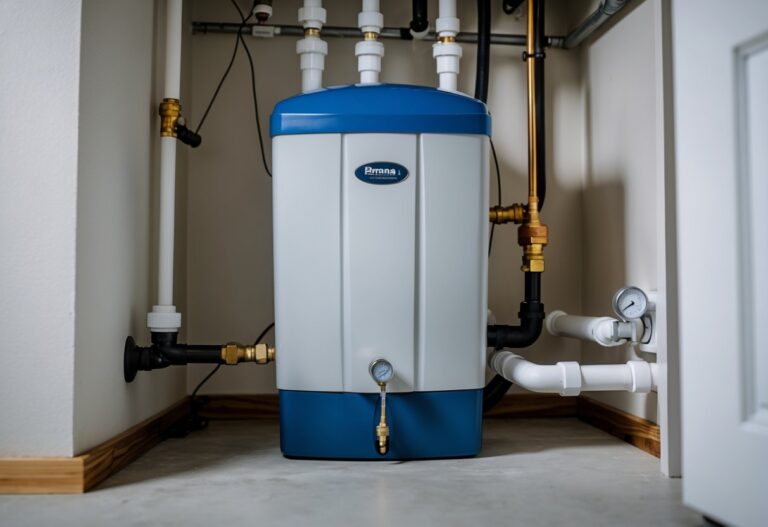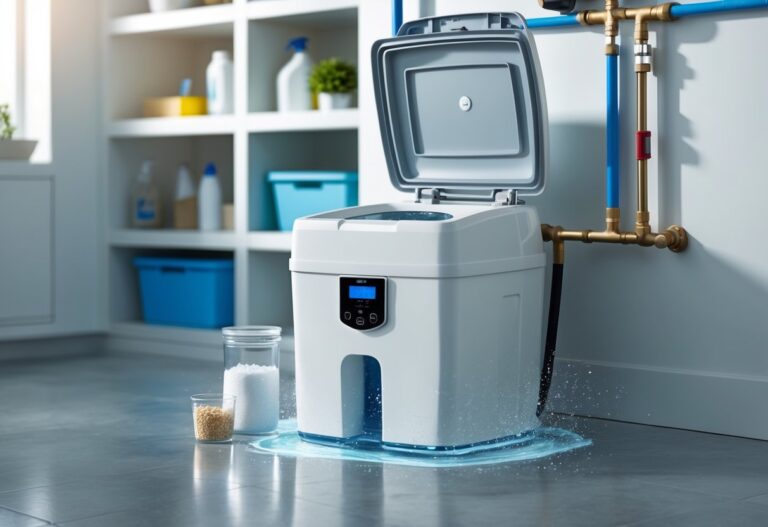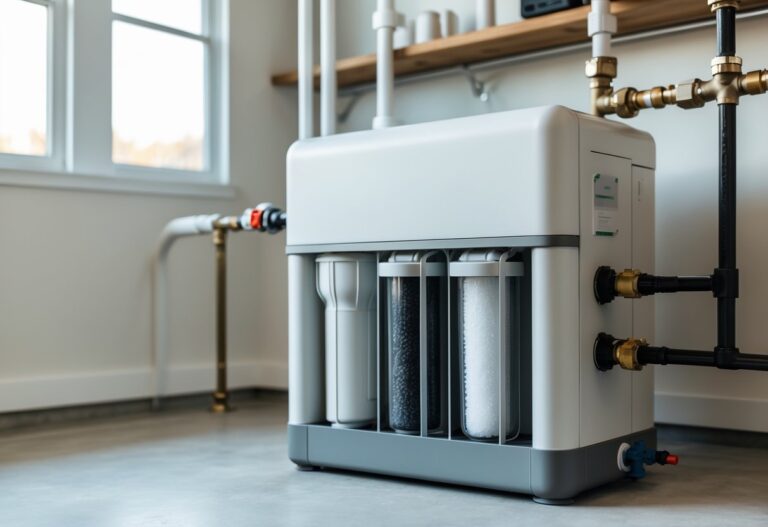Many homeowners wonder if they can install a water softener when they rely on a septic system for waste treatment. The concern often centers around whether the salt and extra water from softening systems will harm the delicate bacterial balance that keeps septic tanks working properly.
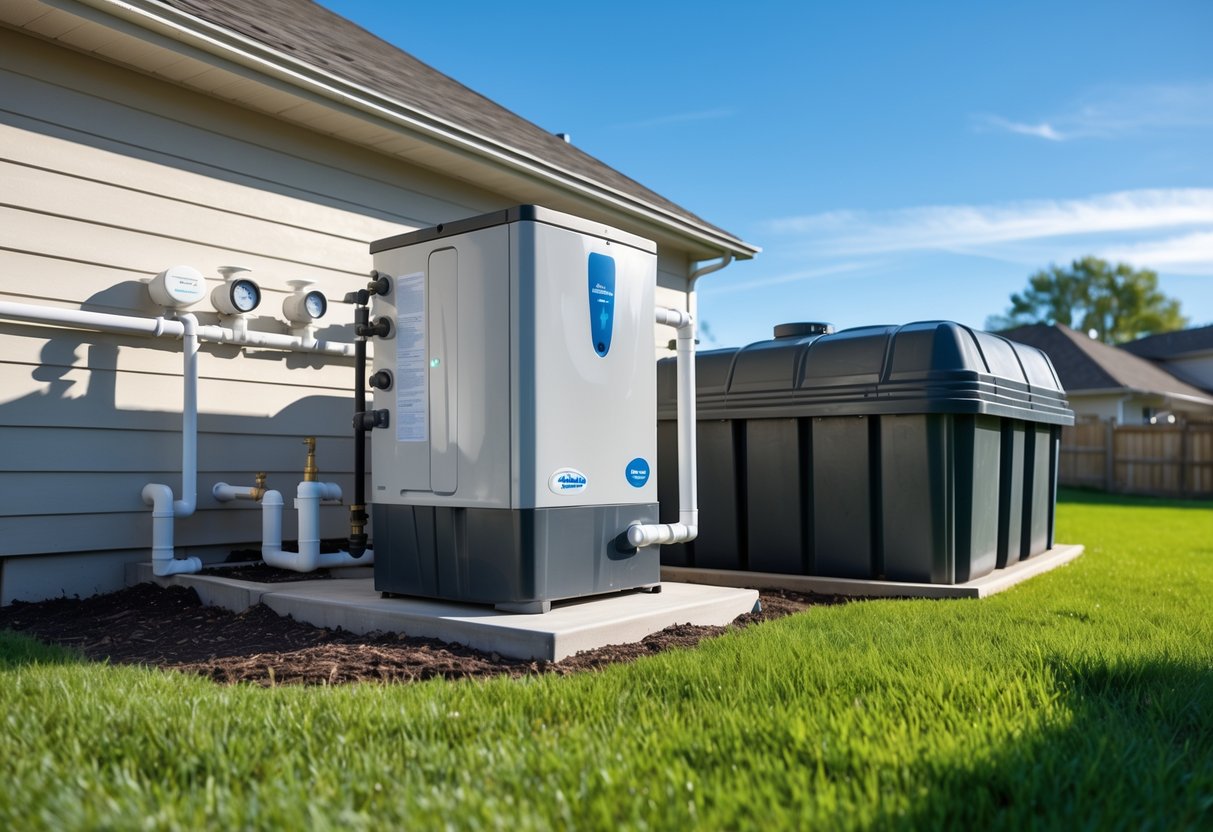
You can safely use a water softener with a septic tank when you choose the right system and follow proper installation practices. While older studies suggested potential problems, modern research shows that typical household water softener use doesn’t significantly disrupt septic system function. The key lies in selecting efficient models and managing regeneration cycles properly.
The real issue isn’t whether these systems can work together, but how to set them up correctly. Understanding the interaction between water softeners and septic systems helps you avoid common mistakes that could cause problems. With the right approach, you can enjoy soft water benefits without compromising your septic system’s performance.
Key Takeaways
- Water softeners can work safely with septic tanks when properly installed and maintained
- High-efficiency models that use less salt and water during regeneration are the best choice for septic systems
- Regular monitoring and professional guidance ensure both systems operate effectively together
Compatibility of Water Softeners With Septic Tanks
Water softeners can work with septic systems, but the increased sodium from ion exchange and brine discharge during regeneration cycles requires careful management to maintain proper bacterial balance in your septic tank.
How Water Softeners and Septic Systems Work Together
Your water softener uses ion exchange to remove calcium and magnesium from hard water. The system replaces these minerals with sodium ions using resin beads.
During the regeneration cycle, your water softener flushes out collected minerals with a brine solution. This wastewater flows directly into your septic system along with other household wastewater.
Your septic tank relies on beneficial bacteria to break down solid waste. These bacteria process the organic matter before liquid effluent moves to the drain field for final treatment.
The softened water from your system reduces scale buildup in your plumbing system and appliances. However, the sodium-rich brine discharge can affect the bacterial environment in your septic tank.
Key compatibility factors:
- Volume of brine discharge during regeneration
- Frequency of regeneration cycles
- Your septic system’s capacity and age
- Type of septic system you have
Most conventional septic systems can handle water softener discharge when properly managed. The key is balancing the benefits of soft water with maintaining healthy septic function.
Potential Benefits and Risks of Water Softeners for Septic Tanks
Benefits for your septic system:
- Reduced soap and detergent usage improves wastewater treatment
- Less chemical buildup in pipes leading to your septic tank
- Improved efficiency of cleaning products reduces chemical additives entering the system
Risks to consider:
- High sodium levels can disrupt beneficial bacteria in your septic tank
- Large volumes of brine discharge can overwhelm your system during regeneration
- Sudden water influx may disturb the settling process in your septic tank
| Benefit | Risk |
|---|---|
| Better soap performance | Bacterial disruption |
| Reduced pipe buildup | Volume overload |
| Less chemical residue | Sodium accumulation |
The regeneration cycle creates the biggest compatibility challenge. Your water softener may discharge 50-100 gallons of salty water in a short time.
This concentrated sodium can temporarily alter the bacterial balance. However, most septic systems recover quickly if the discharge is not excessive.
Modern high-efficiency water softeners minimize these risks by using less salt and water during regeneration cycles.
Impact of Water Softener Discharge on Septic System Function
Brine discharge affects your septic system in several ways. The high sodium content can slow down bacterial activity temporarily, reducing waste breakdown efficiency.
Large volumes of water entering your septic tank quickly can disturb the natural settling layers. Solids may get stirred up and flow toward your drain field prematurely.
Immediate effects:
- Temporary reduction in bacterial activity
- Disruption of waste settling layers
- Increased effluent flow to drain field
Long-term considerations:
- Potential soil compaction in drain field from sodium buildup
- Reduced permeability in soil absorption area
- Need for more frequent septic pumping
Your septic system’s size and age determine how well it handles brine discharge. Newer, properly sized systems typically manage the load better than older or undersized tanks.
The timing of regeneration cycles matters. Systems that regenerate during low-usage periods cause less disruption than those operating during peak wastewater flow times.
Managing Sodium and Brine in Septic Systems
You can reduce sodium impact on your septic system through several strategies. Choose a high-efficiency water softener that uses less salt and regenerates less frequently.
Set your regeneration schedule during low-water-usage periods, typically late at night. This prevents overwhelming your septic tank when other wastewater flows are high.
Management strategies:
- Use potassium chloride instead of sodium chloride when possible
- Adjust hardness settings to avoid over-softening
- Install a separate disposal system for brine discharge if needed
- Monitor your septic system more frequently
Consider testing your water hardness regularly to ensure your softener operates efficiently. Over-softening wastes salt and increases unnecessary sodium discharge.
Some homeowners install brine discharge lines that bypass the septic system entirely. This option requires local permit approval and proper disposal methods.
Maintenance tips:
- Schedule septic inspections annually
- Pump your septic tank more frequently if needed
- Monitor drain field performance for signs of sodium damage
- Keep records of water softener salt usage and regeneration frequency
Regular maintenance of both systems ensures optimal performance and prevents costly repairs from compatibility issues.
Best Practices for Using Water Softeners With Septic Systems
Following proper installation, maintenance, and monitoring practices ensures both your water softener and septic system work together without problems. Smart salt management and regular inspections help prevent system failure and costly repairs.
Proper Sizing and Installation Guidelines
Choose a water softener that matches your household’s daily water usage. A properly sized system uses less salt and creates less backwash discharge into your septic tank.
Install the softener as close to your main water line as possible. This placement reduces the amount of softened water entering your septic system. Consider bypassing outdoor spigots and toilets from the softener.
Set the regeneration cycle based on actual water hardness levels and usage patterns. Most systems regenerate too often by default. Test your water hardness first, then program accordingly.
Use a separate drain line for the softener’s backwash if local codes allow. This keeps salt-heavy discharge away from your septic tank. Check with your local health department about discharge options.
Position the system where you can easily access it for maintenance. Leave enough space around the unit for salt loading and filter changes.
Regular Maintenance for Long-Term Performance
Check salt levels monthly and refill when the tank is one-quarter full. Never let the salt drop below the water level in the brine tank. This prevents system damage and poor performance.
Clean the brine tank every 6-12 months. Remove any salt buildup or sludge at the bottom. Scrub the walls with mild soap and rinse thoroughly before refilling with fresh salt.
Inspect the system quarterly for leaks, cracks, or unusual noises. Replace worn parts immediately to prevent bigger problems. Check all connections and fittings for tightness.
Schedule professional servicing annually. A technician can test system performance, adjust settings, and catch problems early. This prevents costly repairs and extends equipment life.
Monitor your septic system more closely when using a water softener. Pump the septic tank 25% more often than normal to handle the extra sodium load.
Optimizing Salt and Chemical Use
Use potassium chloride instead of sodium chloride when possible. Potassium is less harmful to septic bacteria and soil absorption. It costs more but protects your system better.
Buy high-purity salt to reduce buildup and improve performance. Avoid rock salt or salt with additives that can harm your septic system. Solar salt and evaporated salt work best.
Adjust regeneration settings to use minimal salt while maintaining water quality. Test your water hardness every few months and reduce salt usage when levels drop.
Consider a demand-initiated regeneration system. These units only regenerate when needed, reducing salt use by up to 50%. They cost more upfront but save money long-term.
| Salt Type | Impact on Septic | Cost | Performance |
|---|---|---|---|
| Potassium Chloride | Low impact | High | Excellent |
| Solar Salt | Moderate impact | Medium | Good |
| Rock Salt | High impact | Low | Poor |
Signs of System Failure and When to Seek Help
Watch for slow drains, sewage odors, or wet spots in your drain field. These indicate septic system problems that may worsen with continued softener use.
Test your water quality monthly. Hard water returning means softener problems. Check salt levels, clean the system, or call for service.
Monitor your septic tank pumping frequency. If you need pumping more than twice as often as before, the softener may be overwhelming your system.
Call a professional immediately if you notice gurgling sounds from drains, toilets backing up, or strong sewage smells inside your home.
Check your well water or municipal supply reports for changes in hardness levels. Adjust softener settings accordingly to avoid over-treatment and excess salt discharge.
Schedule regular inspections of both systems by qualified technicians. Early detection prevents expensive repairs and system replacement.
